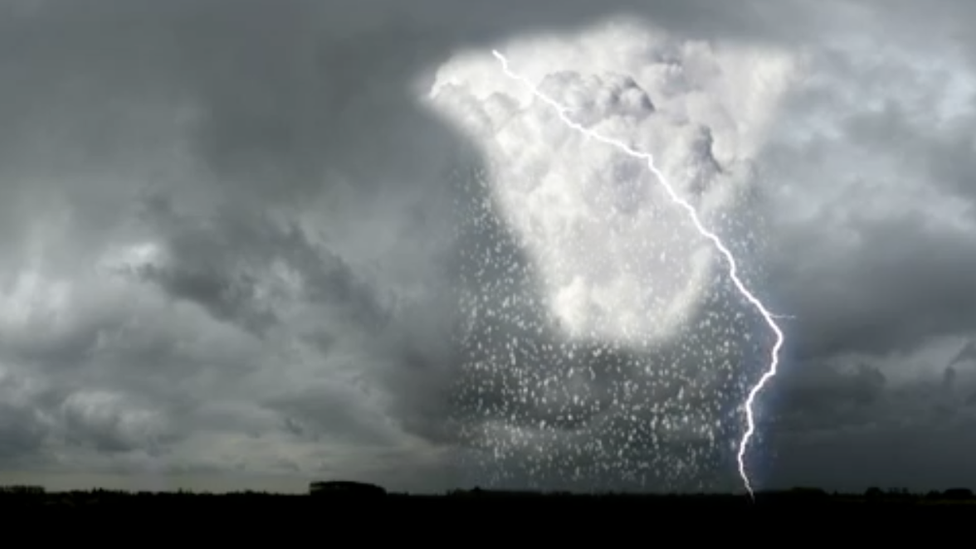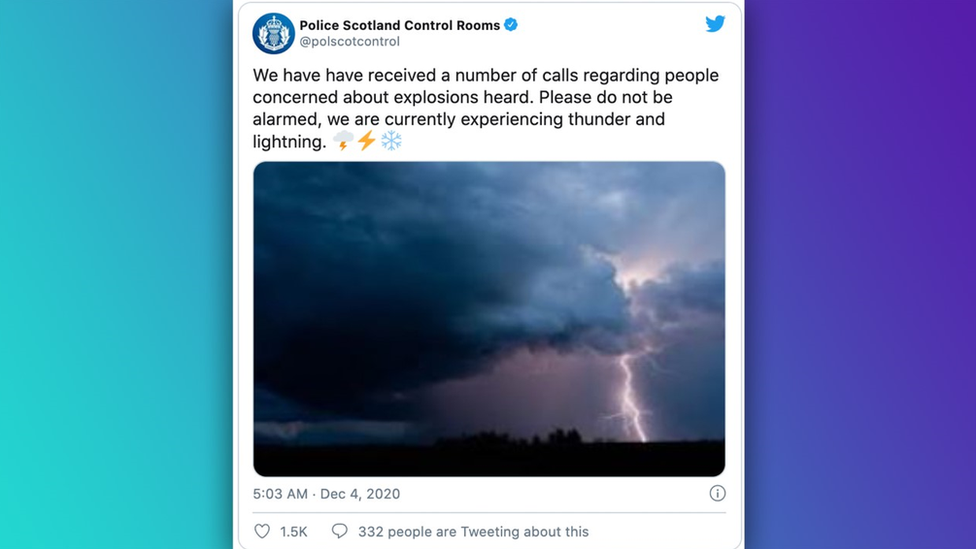Disruption after 'thundersnow' hits Scotland, so what is it?
- Published

BBC Weather presenter Simon King says these dots represent the areas where the thundersnow fell early Friday morning
Most of us get pretty excited when we hear the word "snow", but you may have heard people talking about "thundersnow" this week.
If you are wondering what it is... don't worry we've got you covered.
What exactly is thundersnow? Alex explains.
Thundersnow is simply a thunderstorm, where there is snow falling too.
According to the Met Office, which is the national weather service for the UK, thundersnow is unusual because it can only occur in a few months of the year.
They told us it can happen anytime in Winter, when you'd expect to see snowfall, if there are also the right conditions for thunder to develop - so it's most likely around December to March.
What does thundersnow look like?

When thundersnow happens at night, the lightening looks brighter because the light reflects off the snowflakes.
The Met Office say that the snow inside a "thundersnow" thunderstorm reduces the sound of the thunder.
While the thunder from a normal thunderstorm might be heard from many miles away, the thunder during thundersnow, will only be heard if you are within two to three miles - so you have to be fairly close to it.
Where did it happen?

BBC Weather presenter Simon King says these dots represent the areas where the thundersnow fell early Friday morning
If you live in the Edinburgh or Perth area of Scotland, you may have seen some thundersnow in the early hours of Friday morning.
Police Scotland has reassured people living in Edinburgh, after hundreds of people reported being woken up on Friday by the sound of explosions.
It said what people were actually hearing was "thundersnow".
The snow caused disruption across many areas, including at the Queensferry Crossing which had to close for a short while.

Anne Ash, who lives in Edinburgh, told the BBC the "extremely loud noise" woke her up.
She described it as sounding "a bit like a sonic boom."
"I leapt out of bed and ran to the window and saw it was snowing quite heavily," she said.
She said the weather later quietened down, and the snow was starting to melt away.
- Published31 December 2020

- Published3 December 2020

